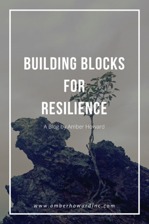
It’s Monday at 9:05 am and your first prospect of the week cancels at the last minute, you open your email and that new client you were so excited about on Friday had a change of heart over the weekend and cancelled their order, frustrated and disappointed you decide to check how many people have signed up for the launch of your newest offering and see the numbers are far below what you expected. Welcome to the life of an entrepreneur! There are breakthroughs, successes, and joys, and there can also be times where things don’t go the way expect them to, which can lead to frustration, overwhelm, and even cause some to walk away from their dreams.
Expectations form brain patterns that are like anchors in our brains allowing up to accomplish things while using as little energy as possible. When life happens, and you can bet it will, you experience gaps between your expectations and reality, which can cause upset. Dealing with disruptive circumstances requires you to use more energy, the bigger the disruption, the more energy required. We all have finite energy available to us, you could experience burnout, when the level of disruption exceeds your available energy resources.
In her book Prosilience, Linda Hoopes defines resilience as the ability to deal with high levels of disruptive change, while maintaining high levels of effectiveness and well-being. By becoming more resilient you adapt quickly and effectively, thrive in adversity, bounce back, use challenges to grow stronger, and have an increased tolerance for change. Being resilient means, it will take less time to disrupt you, you will spend less energy, recovery quicker, and have more productive behaviour. At this point you might be asking yourself, how do I become more resilient? Hoopes outlines four building blocks develop our resilience, and deal more effectively with disruptive challenges in life.
Building Block One: Calming
Start to recognize the physical, mental and behavioral signs of disruption. Some common signs of disruption are accelerated heart-beat, tense shoulders or neck muscles, negative thoughts, anxiety, sleep problems, overeating, irritability, lack of focus and motivation, and headaches. Without going into all the brain science related to the sympathetic/parasympathetic cycles of the brain, you and I both know, we don’t make great choices when we are disrupted. So before you do anything else, stop the action, unless you’re driving, and sit up straight, and take 3 – 6 deep breathes, inhaling, holding, and exhaling for at least four seconds each.
Building Block Two: Resolving Disruption: Three Strategies
- Reframe the Challenge by redefining the situation in a way that reduce or resolves the challenge, remember there are always more than one way to view your circumstances, if your initial view of a situation, is causing you upset, look to see if there is another way to view the circumstance.
- Change the Situation, make sure your fixing the real problem, select the right tools to solve your problem, and if you don’t know what those are ask others for guidance or you can use your influence, expertise, or authority, where appropriate, to effect the outcome of an undesirable circumstance.
- Accept what is, sometimes things are beyond our direct or indirect control, and we can always choose our attitude towards them. What we resist has a habit of persisting in our lives, by accepting what is, we stop wasting our energy on things we can’t actually change.
Building Block Three: Solving Problems Using the Seven Resilience Muscles
Once you have calmed yourselves and decided on the best course of action, we can start taking action to solve the problem. Resilient people have developed seven habits that help them solve problems more effectively, while wasting less energy.
Positivity: they find hope and possibility in the midst of difficult situations
Confidence: they recognize and use their skills and abilities
Priorities: they identify and pay attention to the most important things
Creativity: they generate a range of possibilities and options
Connection: they reach out to others for help and support
Structure: they create and apply disciplined approaches
Experimenting: they try new and different strategies
Delving into these resilience muscles will be the inquiry for another blog, and for now it’s enough to note that we all have these muscles, they work as a system, the more developed the muscle the less energy it takes to use, and they can be developed over time.
Building Block Four: Building Power Four Kinds of Energy
Hoopes reminds us that no matter how strong our resilience muscles are, we will stop being effective, if we run out of energy. We draw on our physical, mental, emotional and spiritual energy to deal with challenges, and they too are a connected system. Brain fog, and being “hangry” are real! To build power you can do the following:
- Reduce any unhealthy practices to make sure you are not wasting energy unnecessarily
- Engage in regular healthy habits that support and recharge your normal energy levels such as having a regular sleep schedule, eating well, and making sure you’re well hydrated. You could also take on gratitude, meditation, or journaling practices.
- Increase your energy capacity by stretching yourself safely over time.

